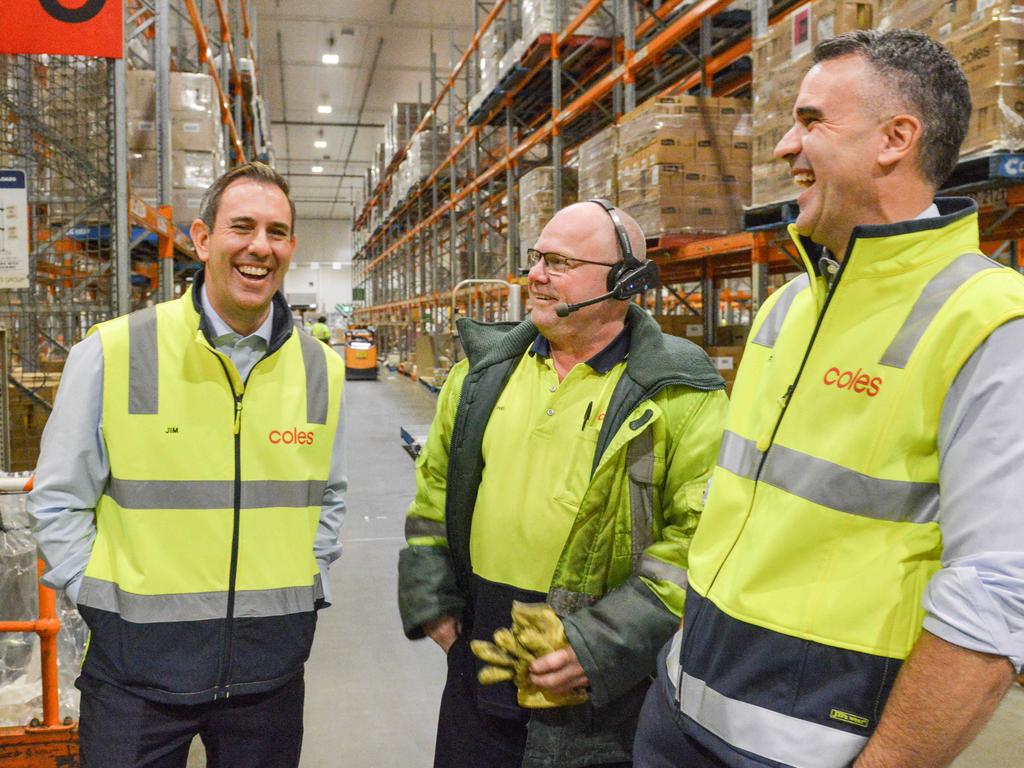Wages data no smoking gun but RBA cautious
The latest wages data provide no smoking gun for another rate hike, but the Reserve Bank nonetheless has reasons to be wary.
The latest wages data provide no smoking gun for another rate hike, but the Reserve Bank nonetheless has reasons to be wary of the potential for high inflation to cause a price-wage spiral.
Australia’s wage price index excluding bonuses rose at a decade-high annual pace of 3.7 per cent in the year to March, versus an upwardly revised 3.4 per cent in the December quarter.
On a quarterly basis, wages rose by 0.8 per cent. Economists said the data were broadly in line with market expectations after accounting for some revisions to seasonal factors.
With inflation now running at 7 per cent on-year, the RBA has warned that a prolonged period of high inflation could lead to a shift in inflation expectations and a change in price- and wage-setting behaviour that would make it more difficult to bring inflation back to its 2-3 per cent target.
Minutes from the RBA’s board meeting this month said wage growth has been consistent with the inflation target, as long as productivity growth picked up to its pre-pandemic rate. The RBA’s liaison contacts and private sector surveys signalled that wages growth was stabilising, the RBA added.
Confirmation in the latest WPI data that wage growth isn’t spiralling out of control should be reassuring for the RBA and suggests it won’t lift rates further, according to Capital Economics.
“The fact that wage growth isn’t spiralling out of control should be reassuring for the RBA and supports our view that the bank is now done tightening,” says Capital Economics head of APAC, Marcel Thieliant.
“That said, we expect an even larger increase in the minimum wage this year than last, which the RBA doesn’t seem to have factored into their forecast. That could yet prompt the Bank to deliver another rate hike at its July or August meeting.”
The RBA’s forecast that annual wage growth will hit 3.8 per cent by the June quarter implied quarterly gains of 0.95 per cent on average in the first and second quarters.
But while quarterly wage growth aggregate cooled, the average size of wage rises – where they occurred – continued to accelerate. A decomposition of the wage increases by the Australian Bureau of Statistics showed 35 per cent of jobs experiencing a wage rise recorded wage growth of 4.3 per cent, and over 10 per cent of the jobs with wage growth saw a pay rise of over 6 per cent.
“From the RBA’s perspective, while wages growth continues to firm, the lack of upside surprise in today’s data supports our view that the RBA is likely to remain on hold at June’s Board meeting,” said Goldman Sachs Australia chief economist, Andrew Boak.
“We continue to expect the Board to wait for updates on broader unit labour costs and the Fair Work Commission’s annual minimum wage adjustment before hiking the cash rate by 25 basis points to 4.1 per cent at July’s meeting.
“That said, a surprise in tomorrow’s labour force data poses risks in both directions.”
Jobs covered by individual arrangements and jobs covered by enterprise agreements made similar contributions to wage rises, a change from the previous trend where jobs covered by individual agreements were the significant driver of wage rises. This change is driven by an increase in the number of new jobs covered by enterprise agreements in the first quarter of the year, underlining employers’ efforts to secure a skilled workforce through more stable enterprise agreements.
Annual public sector WPI growth of 3.0 per cent was the highest since the March quarter of 2013.
The most significant industry contributors to wage growth were a 1.5 per cent rise in education and training and professional, and a 0.9 per cent rise in scientific and technical services.
The RBA expects wage growth to peak at 4 per cent in the year to December.
NAB said that while the wage data should give the central bank more confidence in its assessment that wages growth was stabilising, upside risks to its wages forecasts and their consistency with its inflation forecast remain. NAB continues to expect another 25 basis point lift in the cash rate to 4.1 per cent by August, and sees some chance of a further increase to 4.35 per cent thereafter.
“Key for the near term wages outlook will be the national minimum and award wage decision due by early June, with the risk that a large rise sets a benchmark for other wage agreements,” said NAB economist, Taylor Nugent.
The RBA views its forecast that WPI growth will peak at 4 per cent over 2023 before moderating to 3.7 per cent will be consistent with inflation slowing to 3 per cent by mid-2025, as long as productivity picks up back to pre-pandemic trends.
“That is a reasonable hope, but productivity is exceedingly difficult to read over short time horizons,” Mr Nugent said.
An update on GDP per hour worked comes alongside the GDP data on 7 June, the day after the RBA’s June meeting.






To join the conversation, please log in. Don't have an account? Register
Join the conversation, you are commenting as Logout